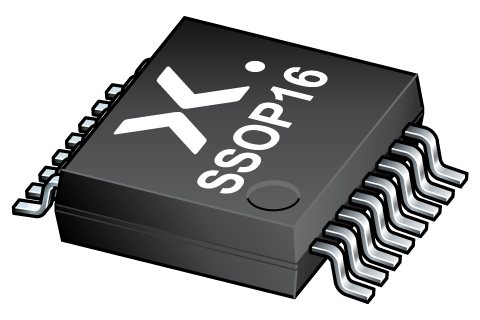
Register once, drag and drop ECAD models into your CAD tool and speed up your design.
Click here for more informationCBT3257ADB
Quad 1-of-2 multiplexer/demultiplexer
CBT3257A是四路2选1高速TTL兼容多路复用器/解复用器。开关的低导通电阻允许输入连接到输出而不增加传播延迟或产生额外的地弹噪声。
输出使能(OE)和选择控制输入为nA输入数据选择适当的nB1和nB2输出。
CBT3257A的特点是工作温度范围为-40 °C至+85 °C。
Alternatives
Features and benefits
- 两个端口之间的5 Ω开关连接
- TTL兼容输入电平
- 通过开关的最小传播延迟
- 闭锁保护超过100 mA,符合JEDEC标准JESD78 II类A级
- ESD保护:
- HBM JESD22-A114F超过2000 V
- MM JESD22-A115-A超过200 V
- CDM JESD22-C101E超过1000 V
- 多种封装选择
- 额定温度范围为-40 °C至+85 °C
参数类型
| 型号 | Product status | Package name |
|---|---|---|
| CBT3257ADB | End of life | SSOP16 |
PCB Symbol, Footprint and 3D Model
| Model Name | 描述 |
|---|---|
|
|
封装
下表中的所有产品型号已停产。参见表 停产信息 了解更多信息。
| 型号 | 可订购的器件编号,(订购码(12NC)) | 状态 | 标示 | 封装 | 外形图 | 回流焊/波峰焊 | 包装 |
|---|---|---|---|---|---|---|---|
| CBT3257ADB | CBT3257ADB,112 (935275889112) |
Obsolete | C3257A |

SSOP16 (SOT338-1) |
SOT338-1 |
SSOP-TSSOP-VSO-REFLOW
SSOP-TSSOP-VSO-WAVE |
Not available |
| CBT3257ADB,118 (935275889118) |
Obsolete | C3257A | Not available |
环境信息
下表中的所有产品型号已停产。参见表 停产信息 了解更多信息。
| 型号 | 可订购的器件编号 | 化学成分 | RoHS | RHF指示符 |
|---|---|---|---|---|
| CBT3257ADB | CBT3257ADB,112 | CBT3257ADB |
|
|
| CBT3257ADB | CBT3257ADB,118 | CBT3257ADB |
|
|
文档 (8)
| 文件名称 | 标题 | 类型 | 日期 |
|---|---|---|---|
| CBT3257A | Quad 1-of-2 multiplexer/demultiplexer | Data sheet | 2024-04-18 |
| AN90010 | Pin FMEA for CBT(D) family | Application note | 2019-10-28 |
| cbt3257a | CBT3257A IBIS model | IBIS model | 2019-06-13 |
| Nexperia_package_poster | Nexperia package poster | Leaflet | 2020-05-15 |
| SSOP16_SOT338-1_mk | plastic, shrink small outline package; 16 leads; 0.65 mm pitch; 6.2 mm x 5.3 mm x 2 mm body | Marcom graphics | 2017-01-28 |
| SOT338-1 | plastic, shrink small outline package; 16 leads; 0.65 mm pitch; 6.2 mm x 5.3 mm x 2 mm body | Package information | 2022-06-20 |
| SSOP-TSSOP-VSO-REFLOW | Footprint for reflow soldering | Reflow soldering | 2009-10-08 |
| SSOP-TSSOP-VSO-WAVE | Footprint for wave soldering | Wave soldering | 2009-10-08 |
支持
如果您需要设计/技术支持,请告知我们并填写 应答表 我们会尽快回复您。
模型
| 文件名称 | 标题 | 类型 | 日期 |
|---|---|---|---|
| cbt3257a | CBT3257A IBIS model | IBIS model | 2019-06-13 |
PCB Symbol, Footprint and 3D Model
| Model Name | 描述 |
|---|---|
|
|
How does it work?
The interactive datasheets are based on the Nexperia MOSFET precision electrothermal models. With our interactive datasheets you can simply specify your own conditions interactively. Start by changing the values of the conditions. You can do this by using the sliders in the condition fields. By dragging the sliders you will see how the MOSFET will perform at the new conditions set.

